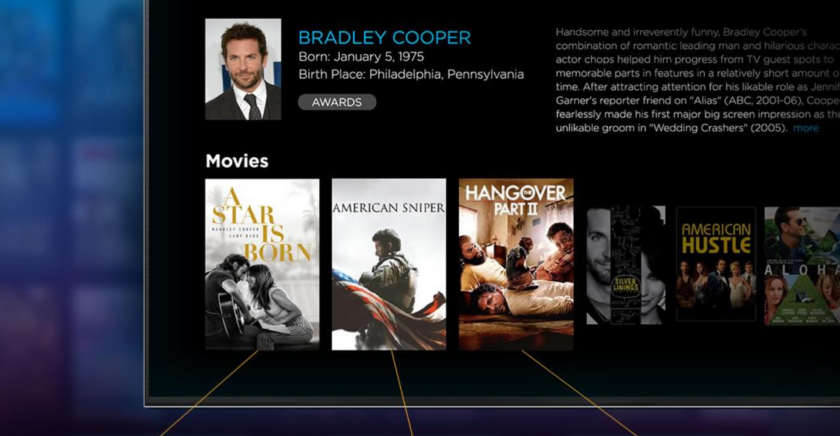Exclusives

Gracenote Adds Video Popularity Score to Advanced Discovery Metadata Offerings
Story Highlights
Gracenote has introduced a video metadata offering it said June 19 was designed to help customers find the most popular movie and TV content.
Gracenote Video Popularity Score, the latest offering in the Nielsen division’s Advanced Discovery suite of metadata products, allows entertainment providers to “more effectively understand the TV shows and movies that viewers broadly want to watch so that they can promote them accordingly from within their catalogs,” it said in an announcement.
Video Popularity Score was in development for six months, according to Kamran Lotfi, VP of product management-video at Gracenote.
“Feedback we had received from the marketplace was that existing solutions were largely one-dimensional — for example only considering social media chatter as a primary identifier for broader popularity, viewer behavior trends on a single service and platform or the recency of content leading to the newest TV shows and movies always being presented in premium positions,” he told the Media & Entertainment Services Alliance (MESA).
That “translated to an opportunity for us to go much deeper,” he said, adding: “Our approach is to tap a number of trusted signals from inside and outside of Gracenote and Nielsen to come up with a truly multi-dimensional offering that goes far beyond existing popularity rankings.”
Video Popularity Score helps “identify and surface hot content by considering recency of TV show airings and theatrical movie releases, viewership and awareness signals from Gracenote and Nielsen plus data from trusted external sources,” Gracenote said in its announcement.
Based on those inputs, Gracenote calculates a numerical score that represents the general population’s recognition level of individual movies or TV series, it said.
By integrating Video Popularity Score data, entertainment providers can deliver smart guides that Gracenote said “automatically identify the most popular programming and prioritize it in their user interfaces, personalized recommendations and search results.”
The new solution also allows for improved voice capabilities via better understanding of user intent within spoken queries, according to Gracenote. For example, the dataset can help differentiate between the broadcast TV show and the Major League Soccer team in response to the voice command, “Watch Chicago Fire.”
Video Popularity Score can also inform editorial curation efforts focused on identifying trending content, in addition to guide licensing activities designed to add potentially resonant TV shows and movies to customers’ catalogs, Gracenote said.
Video Popularity Score “does not presently rely on” artificial intelligence (AI) or machine learning, according to Lotfi. “It currently takes a number of advanced data signals and algorithmically calculates a single numerical score for each piece of content,” he explained, but added: “That said, we are exploring how to leverage advanced technologies within future iterations to become more predictive with our raw signals. Because Video Popularity Score data is updated regularly, this will ensure timeliness and relevance.”
“Several major technology and video customers” are already using and evaluating Video Popularity Score, Lotfi told MESA, declining to name any of them. “Initial testing went well, and they are now in the process of integrating the data into their platforms,” he said, adding the company’s also “making sample data available to other entities who would like to conduct their own testing.”
Gracenote “continues to help customers deliver optimal entertainment discovery experiences wherein viewers are connected to the movies and TV shows they want with the least amount of friction,” Simon Adams, Gracenote chief product officer, said in its announcement.
“Our new Video Popularity Score empowers entertainment providers to identify and put the most relevant, watched and talked about TV shows and movies front and center,” he said, adding: “By enhancing content targeting, Video Popularity Score allows for sharper search results, highly topical recommendations and more relevant viewing options from cold-starts where data on user preferences or previous consumption is not available.”
Viewership is assessed via a proprietary algorithm that Gracenote explained analyzes consumption data covering linear TV, video on demand (VOD) and over-the-top (OTT) from Nielsen Total Content Ratings, movie box office data from Gracenote plus additional raw data from third-party sources. Awareness is calculated based on social media conversation measurement from Nielsen Social Content Ratings combined with key engagement data from outside sources, Gracenote said. Due to the quality and quantity of signals, Video Popularity Score is “one of the most advanced trending measures available to the market today,” the company said.
Video Popularity Score is the latest offering in Gracenote’s Advanced Discovery suite of metadata products that was created to help pay TV providers, OTT services and CE device makers revolutionize the digital video experience and connect viewers to movies and TV shows in innovative ways.
Video Popularity Score follows Gracenote Video Descriptors, the first of the company’s Advanced Discovery products, that was introduced in January. In announcing Video Descriptors, Gracenote said it would enable pay TV providers, OTT services and connected device manufacturers to “unlock deeper user engagement and loyalty in a hyper-competitive marketplace.”
Gracenote is “very encouraged by the market’s reaction to Video Descriptors,” according to Lotfi. “Feedback has been positive with both live customers and prospects who have tested the product, citing the granularity of the metadata and the more nuanced content recommendations it enables,” he said, adding: “Since we spoke with MESA at CES in January, we’ve signed a number of major customers. While we are not at liberty to provide names, the most notable are two global technology players focused on search and social as well as a major” multichannel virtual programming distributor (MVPD) operating in Europe.









